International Journal of Aquaculture and Fishery Sciences
In Vitro Effect of Zinc: Evaluation of the Sperm Quality of Endangered Trout Salmo Coruhensis and Rainbow Trout Oncorhynchus Mykiss and Fertilizing Capacity
Mehmet Kocabaş1 and Filiz Kutluyer2*
2Munzur University, Fisheries Faculty, 62000, Tunceli, Turkey
Cite this as
Kocabaş M, Kutluyer F (2017) In Vitro Effect of Zinc: Evaluation of the Sperm Quality of Endangered Trout Salmo Coruhensis and Rainbow Trout Oncorhynchus Mykiss and Fertilizing Capacity. Int J Aquac Fish Sci 3(2): 046-050. DOI: 10.17352/2455-8400.000028This study was intended to reveal the usefulness of Zinc in endangered trout Salmo coruhensis and rainbow trout Oncorhynchus mykiss sperm. Spermatozoa were activated in sperm motility-activation solutions (NaCl, 0.3%; NaHCO3, 1%) containing the Zinc [Control (0), 0.5, 1, 2, 3, 4 and 5 mM]. The percentage and duration of motility, fertility and hatching rate were determined in sperm samples. Our results indicated that the percentage and duration of motility, fertility and hatching rate increased when activation solution containing NaHCO3 was supplemented with 1 mM Zinc in rainbow trout (O. mykiss). On the contrary, motility rate in endangered trout (S. coruhensis) was increased by Zinc compared to control group. The percentage and duration of motility, fertility and hatching rate were affected by increasing concentrations of Zinc in endangered trout (S. coruhensis) and rainbow trout (O. mykiss) (p<0.05). In conclusion, sperm quality was affected by quantitative changes different concentrations of Zinc and the best results were obtained from a concentration of 1 mM for rainbow trout.
Introduction
Oncorhynchus mykiss and Salmo trutta are the most important Salmonid fish species owing to its aquaculture potential, economic value and wide consumer demand [1,2]. Salmo trutta forms inhabit naturally in the upper streams of rivers and distributed especially in North Africa, Europe, West Asia and [2-4]. In addition, it is an important potential species for recreational fishery. Recently, S. t. labrax ecotype has been described by Turan et al. [5] as S. coruhensis [6,7]. In addition, S. coruhensis is an endemic anadromus fish and only distributed in the rivers of Eastern Black Sea Region [8]. In particular, populations of the species are affected by natural hybridization, the local devastation in water sources through habitat fragmentation and modification, water eutrophication and contaminations, environmental instability and global warming [9-12]. Sperm motility is the essential functional parameter for successful fertilization in fish [13,14]. Sperm cells in most fish species immotile in seminal fluid and require to release into the water in order to trigger motility and become metabolically active [14,15]. Therefore, characteristics of activation solutions are crucial in terms of initiation and progression of sperm motility [14].
Trace elements have a crucial role for the male reproductive process owing to their high activity at the molecular level and Zinc is an essential trace mineral for the normal functioning of the male reproductive system [16], and biological and psychological processes including growth, development, enzyme systems [16-19]. In addition, Zinc is important in terms of help to stabilize the cell membrane and nuclear chromatin of spermatozoa and it is an indispensable microelement in spermatogenesis [19,20-23]. Moreover, it affects activation, production, maturity, and capacitation of sperm [19-23]. Several studies on Zinc and its compounds have been published over the past decade the latest available literature about the embryo development on equine [24], antioxidant and anti-inflammatory effects on testicular damage in rats [25], effects of dietary Zinc on growth performance, antioxidant responses and reproductive performance in different fish species (Oreochromis niloticus, Megalobrama amblycephala, Morone chrysops×Morone saxatilis, Oreochromis niloticus × Oreochromis aureus) [19,26-32], protection of sperm against reactive oxygen species in men [33], male sex hormones and semen quality in rats [23], toxic effect on male reproduction system of different species (e.g. Gyrodactylus turnbulli, Danio rerio, Poecilia reticulate) [34-36]. As far as the authors of this work are aware, no attempt has been made to use of Zinc in sperm quality of fish species in vitro. Within this context, the present study was conducted to obtain more information about effect of Zinc (0.5 mM; 1 mM; 2 mM; 3 mM; 4 mM; 5 mM) in sperm quality and fertilization of endangered trout S. coruhensis and rainbow trout O. mykiss.
Materials and Methods
Six mature endangered trout males (1652.71±0.52 g, 45.61±2.62 cm as mean±SD) and rainbow trout (1388.00±0.55 g, 44.52±2.62 cm as mean±SD) were randomly selected from a broodstock at natural photoperiod and temperature in Fish Production Station Meryemana Stream, Trabzon, Turkey for sperm collection. Water temperature and dissolved oxygen were 5.0±1ºC and 8.6±0.4 mg l-1, respectively. Males were anesthetized (Benzoacaine, 50 mg/L) before stripping. All procedures were approved by ethical of animal usage committee of Karadeniz Technical University. Caution was exercised to prevent contamination of the semen with urine, feces, blood, mucus or water. The sperm was collected by a gentle abdominal massage, collected into glass vials and stored on ice (2-4 °C) until use.
Zinc chloride (ZnCl2) was separately added to the activation solutions (NaCl, 0.3%; NaHCO3, 1%) (one per experimental group): Control (0) (C), (a) 0.5 mM, (b) 1 mM, (c) 2 mM, (d) 3 mM, (e) 4 mM and (f) 5 mM. Each sample was evaluated for the motility parameters using a light microscope with a digital image processing software connected to the computer (Eclipse E50; Nikon Corporation, Tokyo, Japan) to evaluate the percentage of spermatozoa motility and duration. The percentage of sperm motility was estimated as the cell performing progressive forward movement while the duration of motility was determined as the time until forward movement stops. Determining the percentage of sperm motility was assessed using an arbitrary scale with 10% interval increments in which non motile represents 0% [14,37-40].
The pH of sperm samples was measured with a pH meter (Thermo Scientific Orion 5-Star Plus pH meter, USA). The sperm density was diluted at a ratio of 1:1000 with Hayem’s solution (5 g Na2SO4, 1 g NaCl, 0.5 g HgCl2 and 200 ml bidistilled water). The spermatocrit is defined as the ratio of white packed material volume to the total volume of semen × 100. Microhaematocrit capillary tubes (75 mm in length and 1.1–1.2 mm in diameter) were used for spermatocrit measurement. Microhaematocrit capillary tubes filled with sperm were centrifuged at 3000 rpm for 10 min in a LD5-2B centrifuge (Beijing Shiningsun Technology, Japan) and then spermatocrit was calculated on the basis of the ratio of spermatozoa volume (white part) to total volume of sperm × 100.
Fertilization experiments were conducted at 8–10°C. One homogenous egg pool was used for the fertilization experiments. From the eggs the ovarian fluid was drained off and the eggs were placed in fertilization solution a ratio of 1:2 (eggs: solution), then the semen was added and the components were mixed with each other. 100 ± 5 eggs were fertilized with 100 µl sperm (sperm to egg ratio: X105: 1). Three to 5 minutes after fertilization the eggs were rinsed in hatchery water and incubated in flow incubators at water temperature of 9 ± 0.5 °C. The experimental success was determined as the percentage of eyed embryos in relation to the total number of eggs 28 to 30 d after fertilization [37].
Statistical analysis was performed using the software package SPSS 14.0 for Windows and results were expressed as means ± Standard Deviation. Differences among the treatments were tested by one-way ANOVA. The Duncan test was used for all post-hoc comparisons. Significance was set at p<0.05.
Results
Sperm parameters (mean ± SD) are presented in table 1. Effect of Zinc on the percentage and duration of sperm motility in S. coruhensis are shown in figures 1,2. Highest motility (98.33%) was in 0.5 mM Zinc in activation solution containing NaCl whilst highest duration of motility (64 s) was obtained from control group. In activation solution containing NaHCO3, highest motility (100%) was in the concentrations of 0.5, 1, 2, 3 and 4 mM while highest duration of motility (64 s) was obtained from control group. Zinc concentrations of 0.5–5.0 mM had a positive effect on sperm motility compared to control group. In contrast, motility duration was negatively influenced by supplementation of Zinc.
Effect of Zinc on motility and duration of O. mykiss sperm is presented in figures 3,4. The trials indicated that highest motility (95.00%) and duration of motility (82.50 s) were obtained from control group in activation solution containing NaCl (p<0.05). For activation solution containing NaHCO3, highest motility (100%) and duration of motility (118 s) were in a concentration of 1 mM (p<0.05). Zinc concentrations of 2.0–5.0 mM had a negative effect on sperm motility duration compared to control group. Sperm motility was not detected in the Zinc concentrations of 4.0–5.0 mM.
Effects of Zinc on fertility and hatching rate of S. coruhensis and O. mykiss are presented in figures 5,6. Highest fertility and hatching rate were in control group for two activation solutions (NaCl; NaHCO3) (p<0.05). For activation solution containing NaHCO3, highest fertility (93.05%) and hatching rate (83.07%) were in a concentration of 1 mM. In contrast, highest fertility (92.98%) and hatching rate (82.89%) were in control group for activation solution containing NaCl (p<0.05). Fertility and hatching rate were not detected in the Zinc concentrations of 4.0–5.0 mM. In O. mykiss, the Zinc concentrations range of 1.0–5.0 mM had a negative effect on fertility and hatching rate compared to control group.
Discussion
To the best of our knowledge, this is apparently the first report about in vitro effect of Zinc in S. coruhensis and O. mykiss sperm, although studies on Zinc and its compounds have been conducted about the embryo development [24], antioxidant and anti-inflammatory effects on testicular damage [25], growth performance, antioxidant responses and reproductive performance [19,26-32], protection of sperm against reactive oxygen species [33], male sex hormones and semen quality [23] and toxic effect of Zinc on male reproduction system [34-36]. There is little information about effect of Zinc on reproduction system in the scientific literature. Thus far, a study has been conducted to investigate the effect of dietary Zinc on sperm motility parameters (VCL, LIN, VSL, VAP, ALH, and MAD) by Jiang et al. [19].
In this study, we demonstrated the usefulness of Zinc in different activation solutions for in all investigated species. Using 0.5 mM Zinc in activation solution containing NaCl provided high sperm motility rate (98.33%) in S. coruhensis. In contrast, highest percentage and duration of sperm motility, fertility and hatching rate in O. mykiss were obtained from activation solution containing NaHCO3 in a concentration 1 mM as 100.00%, 118 s, 93.05% and 83.07%, respectively. This may be due to the fact that Zinc is involved in a number of metabolic processes and interact with critical biological substances, including pyridoxine, polysaccharides, dehydroascorbic acid, riboflavin, and the pyridine nucleotides [41-44]. In addition, the percentage and duration of sperm motility, fertility and hatching rate decreased with increasing concentration of Zinc. This may be inhibition of motility due to toxic effect of Zinc. Additionally, motility in O. mykiss was not detected in the Zinc concentrations of 4.0–5.0 mM. The lack of motility, independently of cell rupture, may be explained by the fact that Zinc can lead to mitochondrial disruption that are necessary for sperm motility.
In conclusion, based on our results, Zinc had species-specific effects. Zinc was efficiently used for O. mykiss sperm. The effective concentrations were 0.5–1 mM. Zinc can be recommended to increase the quality of sperm. Our study provides new insights related to use of Zinc on fish sperm quality. The knowledge of effects of Zinc and its mechanism of action might be helpful for both research and commercial use. Further studies would be needed to understand the precise mechanisms.
This work was funded by Karadeniz Technical University. Authors like to express deep thanks to continuous help of Aziz KUTLUYER and Devrim ALTUNTAŞ.
- Kocabas M, Kayim M, Can E, Ateş M, Kutluyer F, et al. (2011) Spotting pattern features in the brown trout (Salmo trutta macrostigma, T., 1954) population. Sci Res Ess 6: 5021-5024. Link: https://goo.gl/t1YxF1
- Kocabaş M, Bascinar N (2016) Assessing stock reproductive potential of Salmo rizeensis, Salmo trutta abanticus, Salmo trutta caspius, Salmo trutta fario and Salmo coruhensis with fecundity. Austin Biol 1: 1015. Link: https://goo.gl/qz3f1P
- Kuru M (2004) The last systematic status of inland fish in Turkey. G U J Fac Educ 24: 1-21.
- Kottelat M, Freyhof J (2007) Handbook of European freshwater fishes. Kottelat, Cornol, Switzerland and Freyhof, Berlin, Germany, 646 pp. Link: https://goo.gl/3L1sjk
- Turan D, Kottelat M, Engin S (2009) Two new species of trouts, resident and migratory, sympatric in streams of northern Anatolia (Salmoniformes: Salmonidae). Ichthyol Explor Freshw 20: 333-364. Link: https://goo.gl/Vxtek8
- Can E, Kutluyer F, Delihasan Sonay F, Köse Ö (2012) The use of kefir as potential probiotic in Çoruh trout (Salmo coruhensis): Effects on growth performance and immunoglobulin (IgM) levels, Afr J Biotechnol 11: 7775-7780. Link: https://goo.gl/3FRWe9
- Seyhaneyildiz Can S, Kutluyer F, Can E, Kayiş Ş, Delihasan Sonay F,et al. (2014) Effect of dietary kefir on the digestive and liver enzymes activities, and glucose level of Coruh trout, Salmo coruhensis (Actinopterygii: Salmoniformes: Salmonidae). Acta Ichthyol. Piscat. 44, 167–170. Link: https://goo.gl/ige1Ls
- Kocabaş M, Bascinar N (2013) The effect of salinity on spotting features of Salmo trutta abanticus, S. trutta fario and S. trutta labrax of cultured. Iran J Fish Sci 12: 723-732. Link: https://goo.gl/AHGdDs
- Costedoat C, Pech N, Chappaz R, Gilles A (2007) Novelties in hybrid zones: crossroads between population genomic and ecological approaches. PLoS One 2: e357. Link: https://goo.gl/fgKg4w
- Roberts DG, Gray CA, West RJ, Ayre DJ (2009) Evolutionary impacts of hybridization and interspecific gene flow on an obligatory estuarine fish. J Evol Biol 22: 27–35. Link: https://goo.gl/QTC2xd
- Crego-Prieto V, Martinez JL, Roca A, Garcia-Vazquez E (2012) Interspecific hybridization increased in congeneric flatfishes after the Prestige oil spill. PLoS One 7: e34485. Link: https://goo.gl/16QxtQ
- Šimková A, Vojtek L, Halačka K, Hyršl P, Vetešník L (2015) The effect of hybridization on fish physiology, immunity and blood biochemistry: A case study in hybridizing Cyprinus carpio and Carassius gibelio (Cyprinidae). Aquaculture 435: 381–389. Link: https://goo.gl/Hu2Eit
- Islam SM, Akhter T (2011) Tale of fish sperm and factors affecting sperm motility: a review. Adv Life Sci 1: 11–19. Link: https://goo.gl/njQLT2
- Öğretmen F, Inanan BE, Kutluyer F (2016) Combined effects of physicochemical variables (pH and salinity) on sperm motility: characterization of sperm motility in European sea bass Dicentrarchus labrax. Mar Freshw Behav Physiol 49: 217-222. Link: https://goo.gl/zAX9SC
- Dzyuba B, Boryshpolets S, Rodina M, Gela D, Linhart O (2010) Spontaneous activation of spermatozoa motility by routine freeze-thawing in different fish species. J Appl Ichthyol 26: 720–725. Link: https://goo.gl/RdK1vZ
- Zhou Z, Ren Z, Zeng H, Yao B (2008) Apparent digestibility of various feedstuffs for bluntnose black bream Megalobrama amblycephala Yih. Aquac Nutr 14: 153–165. Link: https://goo.gl/hJYFWF
- Watanabe T, Kiron V, Satoh S (1997) Trace minerals in fish nutrition. Aquaculture 151: 185–207. Link: https://goo.gl/ybNHM4
- NRC (2011) Nutrient Requirements of Fish and Shrimp. National academy press Washington DC. Link: https://goo.gl/9CMjfR
- Jiang M, Wu F, Huang F, Wen H, Liu W, et al. (2016) Effects of dietary Zn on growth performance, antioxidant responses, and sperm motility of adult blunt snout bream, Megalobrama amblycephala. Aquaculture 464: 121–128. Link: https://goo.gl/YWZo4o
- Chvapil M (1973) New aspects in the biological role of zinc: a stabilizer of macromolecules and biological membranes. Life Sci 13: 1041-1049. Link: https://goo.gl/JEc6sB
- David T, Mayer GD, Walsh PJ, Christer H (2002) Sexual maturation and reproductive zinc physiology in the female squirrelfish, J Exp Biol 205: 3367–3376. Link: https://goo.gl/ozfemb
- Kvist U (2008) Importance of spermatozoal zinc as temporary inhibitor of sperm nuclear chromatin decondensation ability in man. Acta Physiol Scand 109: 79-84. Link: https://goo.gl/HE7RVZ
- Egwurugwu JN, Ifedi CU, Uchefuna RC, Ezeokafor EN, Alagwu EA (2013) Effects of zinc on male sex hormones and semen quality in rats. Niger J Physiol Sci 28: 17–22. Link: https://goo.gl/7ymNw5
- Choi YH, Gibbons JR, Canesin HS, Hinrichs K (2016) Effect of medium variations (zinc supplementation during oocyte maturation, perifertilization pH, and embryo culture protein source) on equine embryo development after intracytoplasmic sperm injection, Theriogenology 86: 1782–1788. Link: https://goo.gl/zoRdXQ
- Wu J, Wu S, Xie Y, Wang Z, Wu R, et al. (2015) Zinc protects sperm from being damaged by reactive oxygen species in assisted reproduction techniques. Reprod BioMed Online 30: 334–339. Link: https://goo.gl/J8U5ot
- Do Carmo e Sá MV, Pezzato LE, Barros MM, De Magalhães Padilha P (2004) Optimum zinc supplementation level in Nile tilapia Oreochromis niloticus juvenile’s diets. Aquaculture 238: 385–401. Link: https://goo.gl/F4opZE
- Do Carmo e Sá MV, Pezzato LE, Barros MM, De Magalhães Padilha P (2005) Relative bioavailability of zinc in supplemental inorganic and organic sources for Nile tilapia Oreochromis niloticus fingerlings. Aquac Nutr 11: 273–281. Link: https://goo.gl/7CdNNM
- Alejandro Buentello J, Goff JB, Gatlin III DM (2009) Dietary zinc requirement of hybrid striped bass, Morone chrysops×Morone saxatilis, and bioavailability of two chemically different zinc compounds. J World Soc 40: 687–694. Link: https://goo.gl/ScNbsW
- Zhao HX, Cao JM, Liu XH, Zhu X, Chen SC, et al. (2009) Effect of supplemental dietary zinc sources on the growth and carbohydrate utilization of tilapia Smith 1840, Oreochromis niloticus × Oreochromis aureus, Aquac Nutr 17: 64–72. Link: https://goo.gl/nnejtM
- Gammanpila M, Yakupitiyage A, Bart A (2010) Evaluation of the effects of dietary vitamin C, E and Zinc supplementation on reproductive performance of Nile tilapia (Oreochromis niloticus). Sri Lanka J Aquat Sci 12: 39–60. Link: https://goo.gl/KkdmKf
- Feng H, Jianga M, Wena H, Wua F, Liua W, et al. (2015) Dietary zinc requirement of adult Nile tilapia (Oreochromis niloticus) fed semi-purified diets, and effects on tissue mineral composition and antioxidant responses. Aquaculture 439: 53–59. Link: https://goo.gl/Z7o2Qa
- Li MR, Huang CH (2015) Effect of dietary zinc level on growth, enzyme activity and body trace elements of hybrid tilapia, Oreochromis niloticus × O. aureus, fed soya bean meal-based diets. Aquac Nutr 22: 1320–1327. Link: https://goo.gl/M7NhQn
- Bashandy SAEM, Omara EAA, Ebaid H, Amin MM, Soliman MS (2016) Role of zinc as an antioxidant and anti-inflammatory to relieve cadmium oxidative stress induced testicular damage in rats. Asian Pac J Trop Biomed 6: 1056–1064. Link: https://goo.gl/1QTVAo
- Pierson KB (1981) Effects of chronic zinc exposure on the growth, sexual maturity, reproduction, and bioaccumulation of the guppy, Poecilia reticulate. Can J Fish Aquat Sci 38: 23-31. Link: https://goo.gl/8HTYom
- Gheorghiu C, Cable J, Marcogliese DJ, Scott ME (2007) Effects of waterborne zinc on reproduction, survival and morphometrics of Gyrodactylus turnbulli (Monogenea) on guppies (Poecilia reticulata). Int J Parasitol 37: 375-381. Link: https://goo.gl/nEMB35
- Ansari S, Ansari BA (2015) Effect of Zinc, Nickel and Chromium on reproductive ability of zebrafish, Danio rerio, Asian J Biochem Pharm Res 3: 65-70.
- Kutluyer F, Kayim M, Ögretmen F, Büyükleblebici S, Tuncer PB (2014) Cryopreservation of rainbow trout Oncorhynchus mykiss spermatozoa: Effects of extender supplemented with different antioxidants on sperm motility, velocity and fertility. Cryobiology 69: 462-466. Link: https://goo.gl/Ch8bmP
- Kutluyer F, Erisir M, Benzer F, Ögretmen F, Inanan BE (2015) The in vitro effect of Lambda-cyhalothrin on quality and antioxidant responses of rainbow trout Oncorhynchus mykiss spermatozoa. Environ Toxicol Pharmacol 40: 855-860.Link: https://goo.gl/aQw75L
- Kutluyer F, Benzer F, Erisir M, Ögretmen F, Inanan BE (2016) The in vitro effect of cypermethrin on quality and oxidative stress indices of rainbow trout Oncorhynchus mykiss spermatozoa. Pest Biochem Physiol 128: 63-67. Link: https://goo.gl/5KADbz
- Öğretmen F, Gölbaşi S, İnanan BE (2014) Inhibitory effect of K+ and Ca2+ concentrations, pH, and osmolality of activation solution on motility of shabut (Barbus grypus Heckel 1843) spermatozoa. Turk J Vet Anim Sci 38: 245-252. Link: https://goo.gl/8SRfXS
- Naghii MR, Samman S (1993) The role of boron in nutrition and metabolism. Prog Food Nutr Sci 17: 331-349. Link: https://goo.gl/NjdnEH
- Hunt CD (1994) The biochemical effects of physiological amounts of dietary boron in animal nutrition models. Environ Health Persp 102: 35- 43. Link: https://goo.gl/mZtW63
- Samman S, Naghii MR, Lyons Wall PM, Verus AP (1998) The nutritional and metabolic effects of boron in humans and animals. Biol Tr Elem Res 66: 227–235. Link: https://goo.gl/1TPyzt
- Devirian TA, Volpe SL (2003) The physiological effects of dietary boron. Crit Rev Food Sci Nutr 43: 219-231. Link: https://goo.gl/y4ovtB

Article Alerts
Subscribe to our articles alerts and stay tuned.
 This work is licensed under a Creative Commons Attribution 4.0 International License.
This work is licensed under a Creative Commons Attribution 4.0 International License.
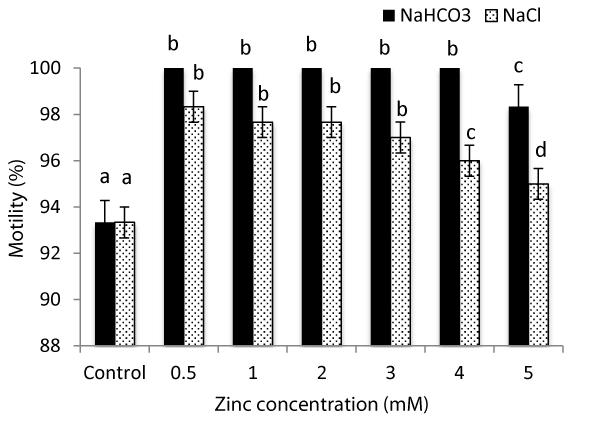
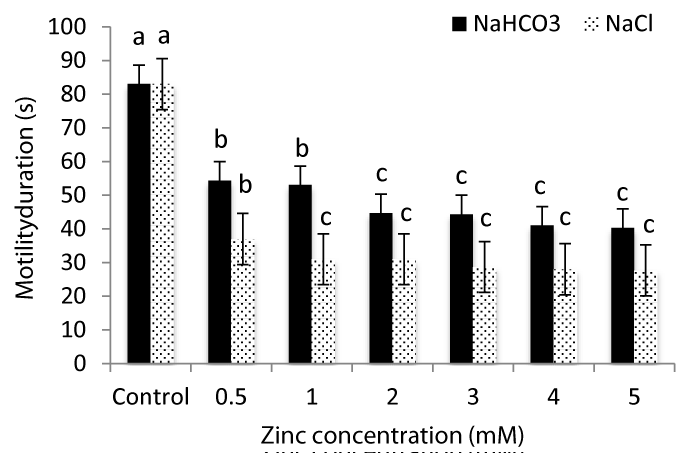
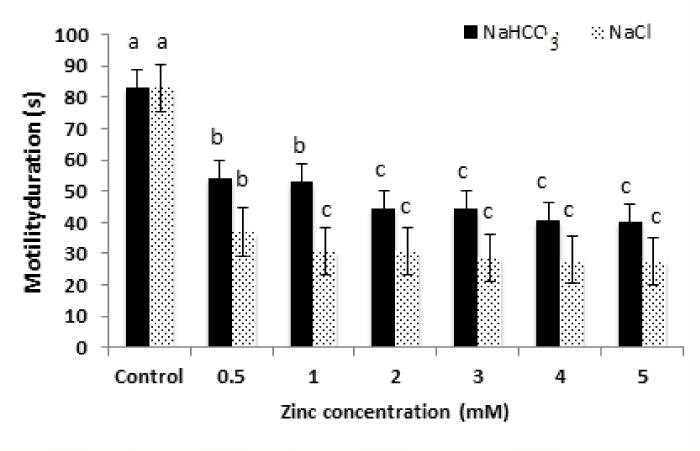
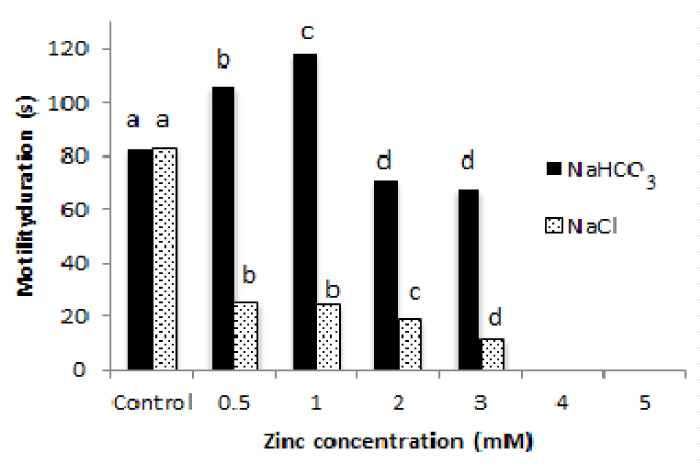
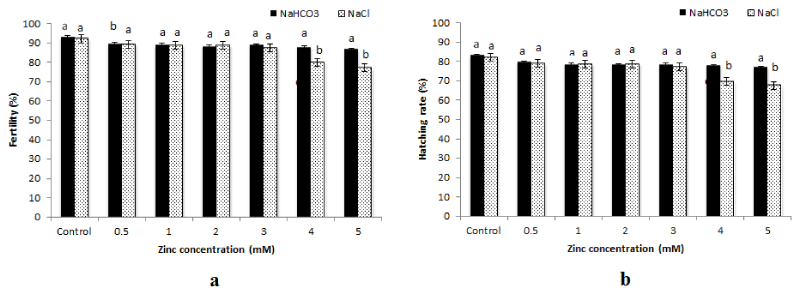
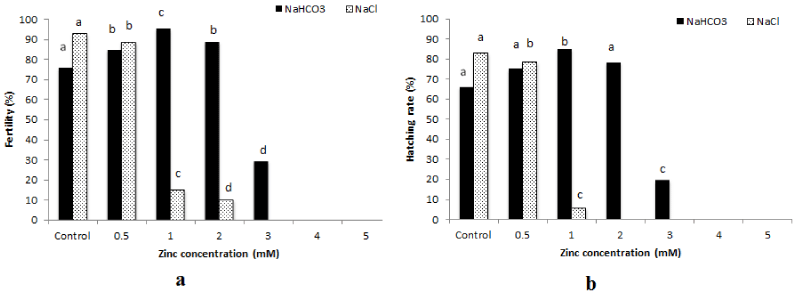
 Save to Mendeley
Save to Mendeley
